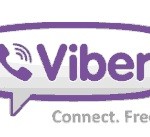This press release has been published without editing
Mumbai, India, November 12, 2013: Viber announces today the release of version 4.0 of its platform on iPhone and Android. This is an important update to the platform since it brings two, new core features including a brand new Sticker Market with many new stickers available for free and for purchase, and a new Push To Talk feature for instant voice messaging. The release also provides support for Android tablets, taking advantage of the new form factor.
Additionally, this is the first release in which Viber will introduce a monetization feature to its millions of users. “This version of Viber is all about expressing yourself in more fun, exciting ways. Our new Sticker Market offers over 1000 unique, fun, expressive characters, many of which were designed specifically for our users in Asia,” said Talmon Marco, CEO of Viber. “Also, we are the first of the major messaging services to add Live Push To Talk, streamed instantly between users. No sending, no waiting.”
Viber Sticker Market – More Stickers And More Fun
Viber users love the multiple stickers they can share with other users of the platform. With the release of the Viber Sticker Market, users can access an even larger selection of fun and playful stickers. Additionally, the market will feature exclusive content tied into timely events and holidays throughout the year and will be regularly updated with new content to make messaging relevant and more personal. Viber users have reacted enthusiastically to the stickers the company has already released, including Viber’s signature character – Violet. As part of today’s release, the company unveiled Mayo and Blu, two new featured characters, as well as many more new personalities that expand the cast of playful stickers Viber users can share with their friends.
Push To Talk (Instant Voice Messaging)
Communicate For Free, Instantly Viber users’ favorite contacts are just a tap away with the introduction of Push To Talk, an instant form of communication that lets Viber users send short voice messages to each other.
Viber’s Push To Talk is significantly better than that of other messaging apps. Typically, Push To Talk is a four-step process – record, send, download, play. Viber does all four at the same time. This way, the average response time to a 15 second message is 4-6 seconds, rather than 45-60 seconds.
“This is the most exciting release we’ve had for Viber since we launched the platform. Today’s updated version brings a vast new range of features and functionality to Viber,” said Talmon Marco. “Viber has always aimed to provide a complete communications experience. With the new features we’ve brought to the platform, Viber lets users connect and stay connected in more ways than ever.”
Upgrades And Enhancements From Top-To-Bottom
In addition to the major new features, Viber 4.0 is packed with upgrades, enhancements and new features that take the platform to a whole new level. New features include:
• Message forwarding to any group or contact
• Choose new conversation backgrounds from a custom background gallery
• Group conversations with up to 100 participants
Viber on Android, Now Optimized for Tablets
Version 4.0 of Viber includes several new features available only on Android. Top amongst these is support for Android tablets. The new version of Viber has been designed to take advantage of the tablet form factor and users can now enjoy Viber on an unlimited number of Android tablets in addition to their smartphone. Viber’s support of Android tablets is similar to that of desktops, bringing the user’s mobile contacts to the tablet and providing full synchronization with messages and calls on the other devices. Other Android specific enhancements include:
• Improved notifications for Android 4.0 and up
• Light Up Screen setting for incoming messages
• Use Viber messaging while on a Viber call
About Viber:
Viber is developed by Viber Media, a pioneering mobile messaging and VoIP company. Viber lets everyone in the world connect. Freely. Viber users can send free text messages, photo messages, voice messages, share locations anywhere in the world, and make free, HD-quality calls on iPhone®, Android phones and tablets,™ Windows Phone, Blackberry®, Windows®, Mac, Linux, Symbian, Nokia S40 and Bada devices over 3G/4G or WiFi connections. With more than 200 million users in 193 countries, Viber is constantly innovating by introducing new platforms and adding fun new features including stickers and emoticons.
Advertising Message


